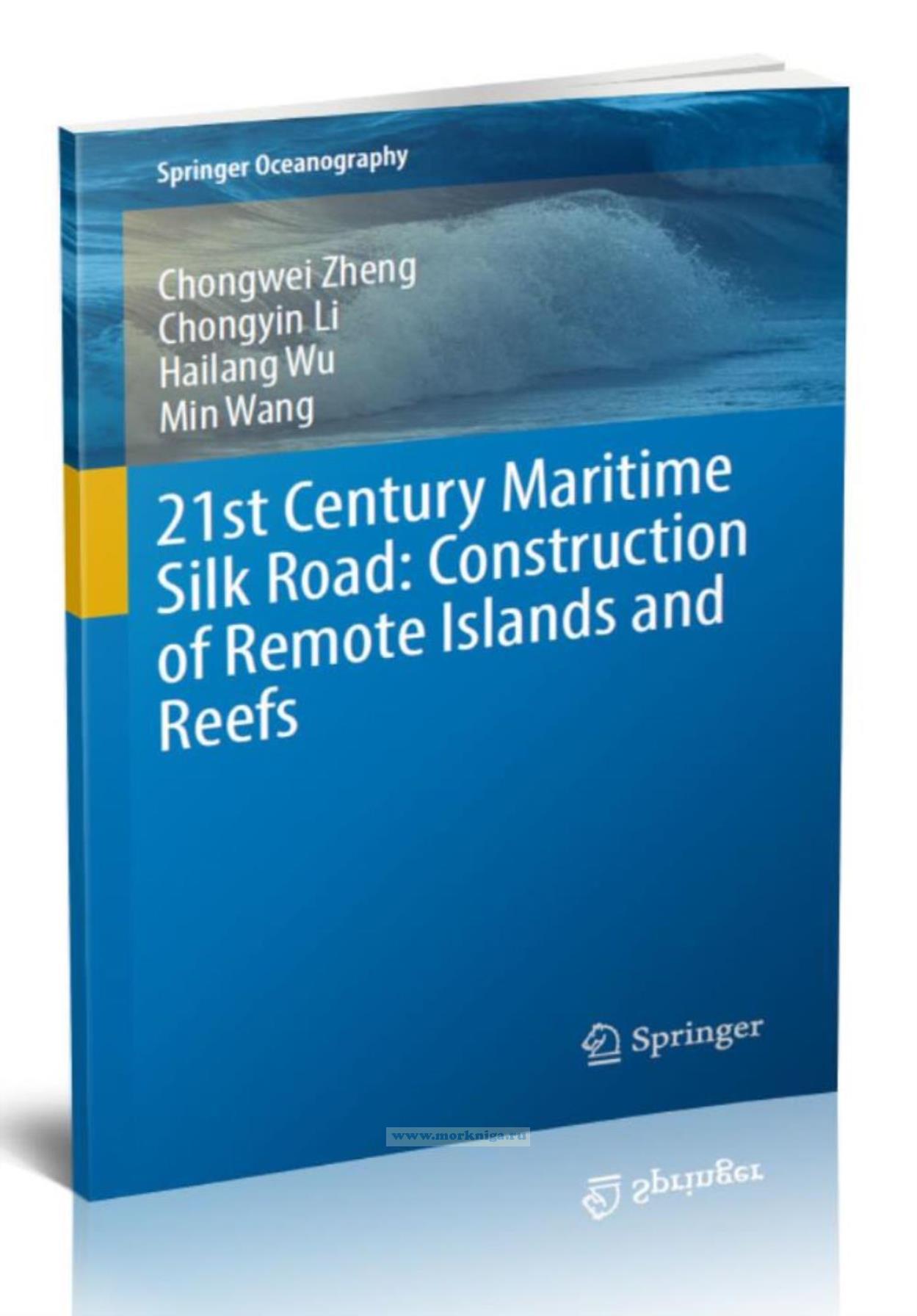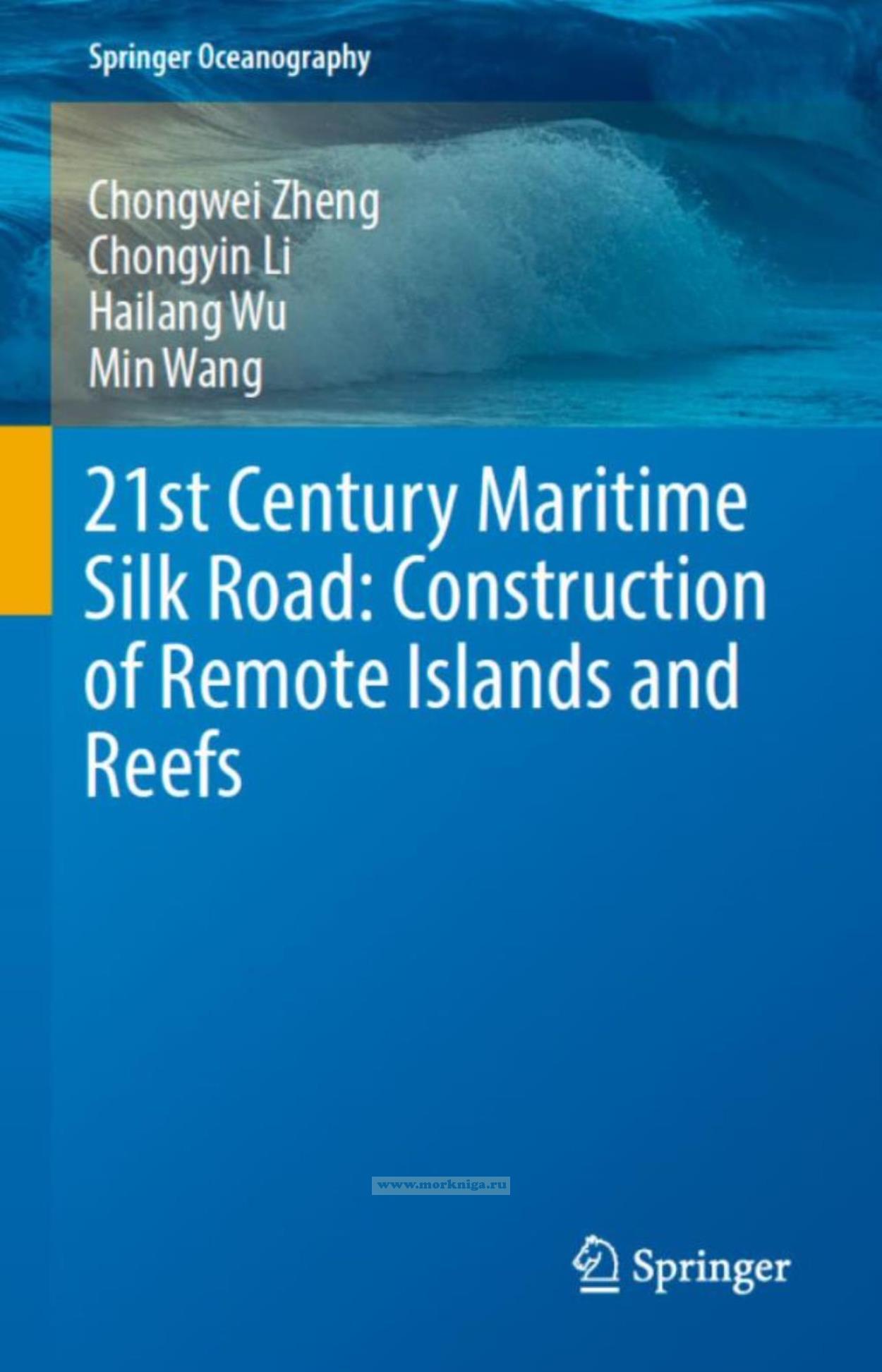21st Century Maritime Silk Road: Construction of Remote Islands and Reefs/–Ь–Њ—А—Б–Ї–Њ–є –®–µ–ї–Ї–Њ–≤—Л–є –њ—Г—В—М 21 –≤–µ–Ї–∞: —Б—В—А–Њ–Є—В–µ–ї—М—Б—В–≤–Њ –Њ—В–і–∞–ї–µ–љ–љ—Л—Е –Њ—Б—В—А–Њ–≤–Њ–≤ –Є —А–Є—Д–Њ–≤
–Ъ–љ–Є–≥–∞ –љ–∞ –∞–љ–≥–ї–Є–є—Б–Ї–Њ–Љ —П–Ј—Л–Ї–µ
Discusses the functions, necessity and difficulties of remote islands and reefs construction in the process of stepping into the deep sea while providing corresponding countermeasures. Exhibits the comparison of advantages and disadvantages among new energy resources, such as wave energy, solar energy, wind energy, nuclear energy and so on. Analyzes systematically the characteristics of wave and wind energy around the important islands and reefs along the Maritime Silk Road to meet the urgent demand of electricity and fresh water. Forms a wave and wind energy evaluation system that extensively suitable for islands and reefs, thus to provide reference for the site location, daily operation and mid-long term planning of wave.
Contents
1 Necessity, Difficulties and Countermeasures of Remote Islands and Reefs Construction
1.1 Necessity and Function of Marine Key Points
1.2 Difficulties and Countermeasures of Marine Key Points Construction
1.2.1 Rational Selection of the Marine Key Points
1.2.2 Risk Evaluation of the Marine Key Points
1.2.3 Insufficiency of Electricity and Fresh Water
1.2.4 Fragility of the Ecological Environment
1.2.5 Terrible Survival and Medical Condition
1.2.6 Complicacy Dispute on Marine Rights and Interests
1.3 Structure of This Book
References
2 Wave and Wind Energy Boost the Marine Key Points Construction
2.1 Advantages of the Wave Energy and Wind Energy Resources
2.1.1 Comparison Among New Energy Resources
2.1.2 Prospect of Wave Energy and Wind Energy
2.1.3 Introduction of Wave Energy Conversion System
2.2 Enhance the Viability Ability of Marine Key Points
2.3 Prospect
References
3 Wind Energy Resource Assessment in the Gwadar Port
3.1 Data and Methodology
3.2 Monthly Variation of Wind Power Density
3.3 Effective Wind Speed Occurrence
3.4 Energy Level Occurrences
3.5 Wind Energy Rose
3.6 Long Term Trend of Wind Energy
3.7 Wind Class Occurrence
3.8 Summary and Prospect
References
4 Climatic Trend and Prediction of the Wind Energy in the Gwadar Port
4.1 Data and Methodology
4.2 Climatic Trend of Wind Power Density
4.3 Climatic Trend of Effective Wind Speed Occurrence
4.4 Climatic Trend of Energy Level Occurrences
4.5 Climatic Trend of the Gale Occurrence
4.6 Stability of Wind Energy and Its Climatic Trend
4.7 Dominant Season of the Long Term Trend
4.8 MidвАУLong Term Prediction of Wind Energy
4.8.1 Prediction Training
4.8.2 Prediction of Wind Energy Factors
4.9 Summary and Prospect
References
5 Wind and Wave Energy in the Important Waters of the South China Sea
5.1 Data and Methodology
5.1.1 Data
5.1.2 Methodology
5.1.3 Calculation Method of Wind/Wave Power Density
5.2 Monthly Characteristic of Wind Speed, Wave Height, Wind/Wave Power Density
5.3 Effective Wind Speed Occurrence and Effective Wave Height Occurrence
5.4 Wind Energy and Wave Energy Storage
5.5 Wind/Wave Class Occurrence
5.6 Extreme Wind Speed and Extreme Wave Height
5.7 Wind/Wave Rose
5.8 Wind/Wave Energy Level Occurrence
5.9 Stability of Wind/Wave Energy
5.10 Trends of Wind Speed, Wave Height, Wind/Wave Power Density
5.11 Summary
References
6 Feasibility of Wind Power and Wave Power Generation in the South China Sea
6.1 Data and Methodolog
6.1.1 Data
6.1.2 Methodology
6.2 Monthly Wind/Wave Power Density
6.3 Occurrences of Effective Wind Speed and Effective Wave Height
6.4 Energy Level Occurrence
6.5 Wind and Wave Energy Rose
6.6 Contribution of Different Sea States to the Total Wave Energy
6.7 Storage of Wind and Wave Energy Resource
6.8 Long Term Trend of Wind and Wave Energy
6.9 Stabillity of Wind and Wave Energy
6.10 Summary
References
7 Wind Climate and Wave Climate in the Remote Island of the South China Sea
7.1 Data and Methodolog
7.2 Strong Wind/Wave Direction Occurrence
7.3 Wind/Wave Class Occurrence
7.4 Monthly Variation of Wind Speed and Wave Height
7.5 Daily Variation of Wind Speed and Wave Height
7.6 Long Term Trend of Wind Speed and Wave Height
7.7 Summary
References
8 Wind-Sea, Swell and Mixed Wave Energy
8.1 Data and Methodology
8.1.1 Data
8.1.2 Methodology
8.2 Monthly Characteristics of Wind Speed and Wave Height
8.3 Wave Class Occurrence
8.4 Occurrence of Wave Direction
8.5 Monthly Characteristics of the Wave Power Density
8.6 Stability of Wind-Sea and Swell Energy
8.7 Summary and Prospect
References
9 Wind Climate Under the Demand of Island Runway Design
9.1 Data and Methodology
9.1.1 Data
9.1.2 Methodology
9.2 Wind Climate Analysis
9.2.1 Wind Rose
9.2.2 Gale Occurrence and Strong Gust Occurrence
9.2.3 Gust Index
9.3 Summary and Prospect
References
Appendix

